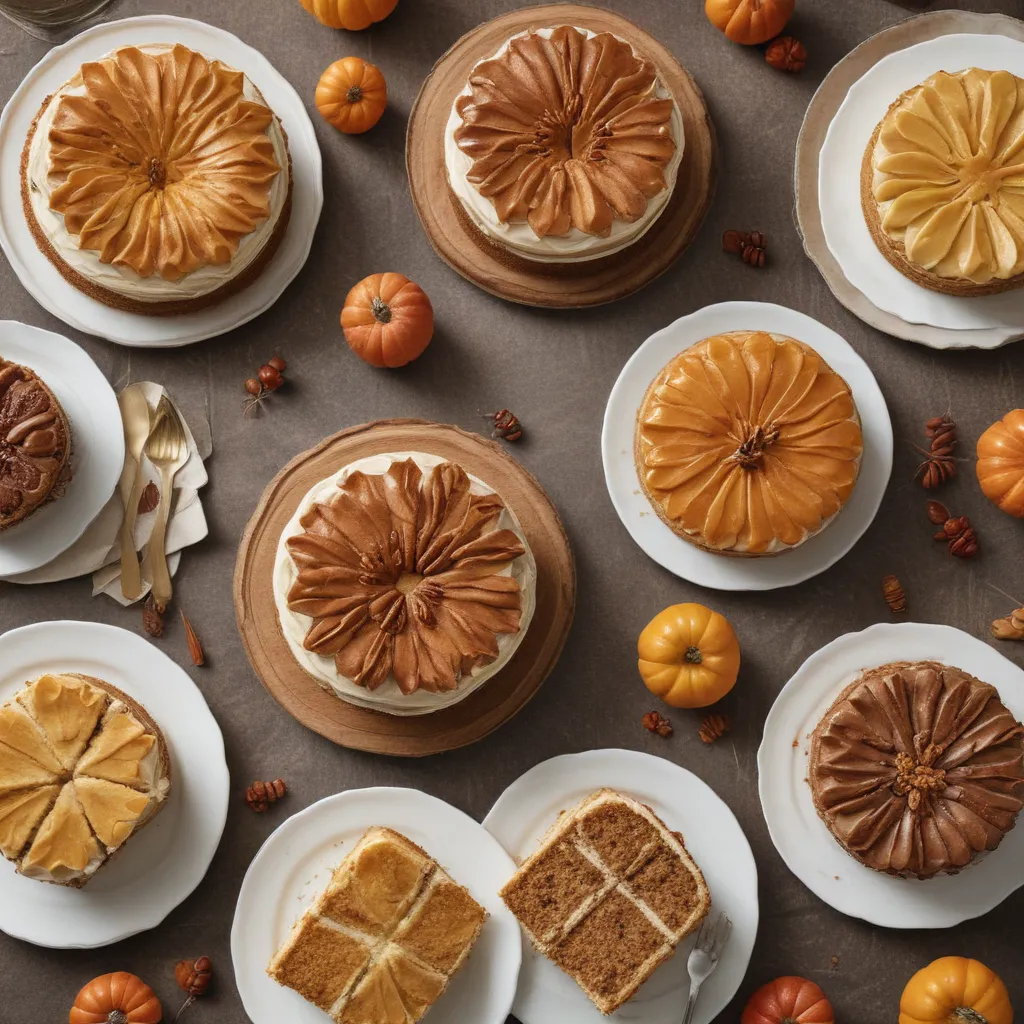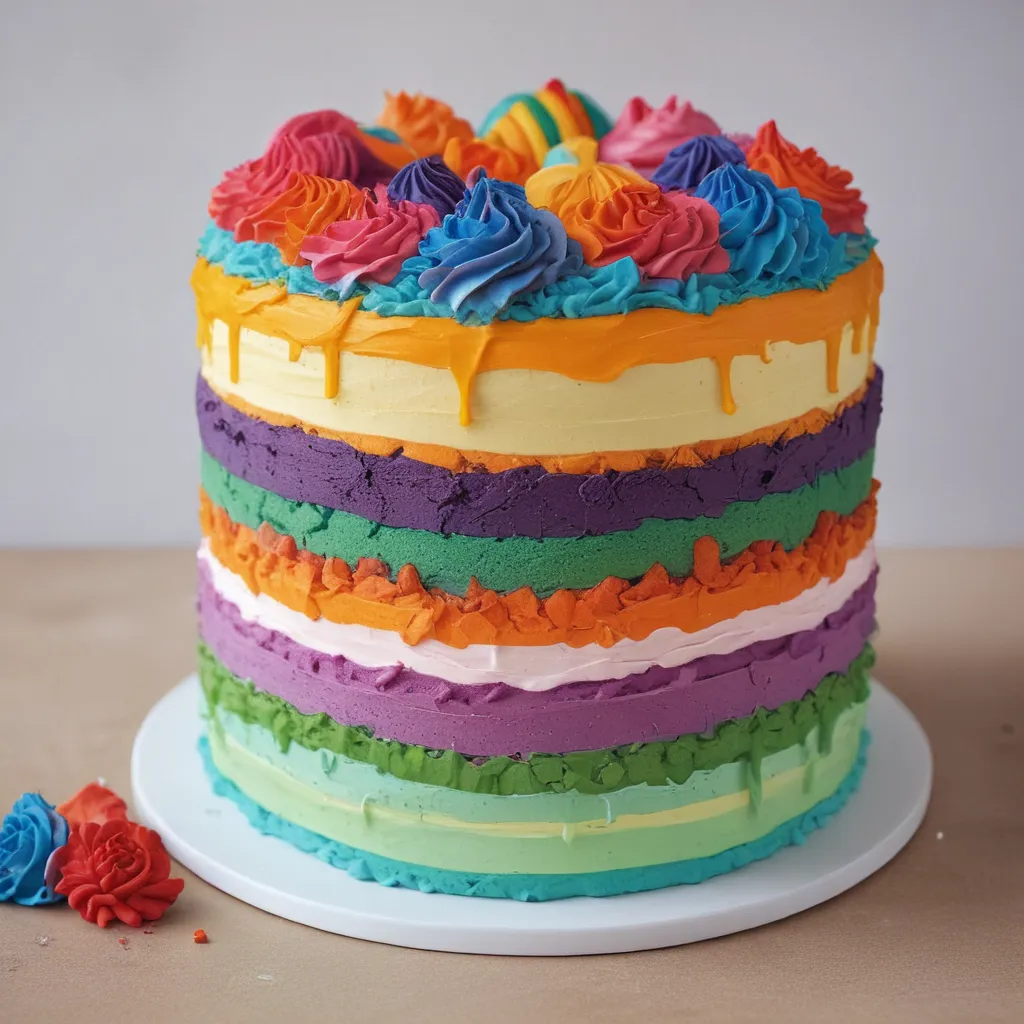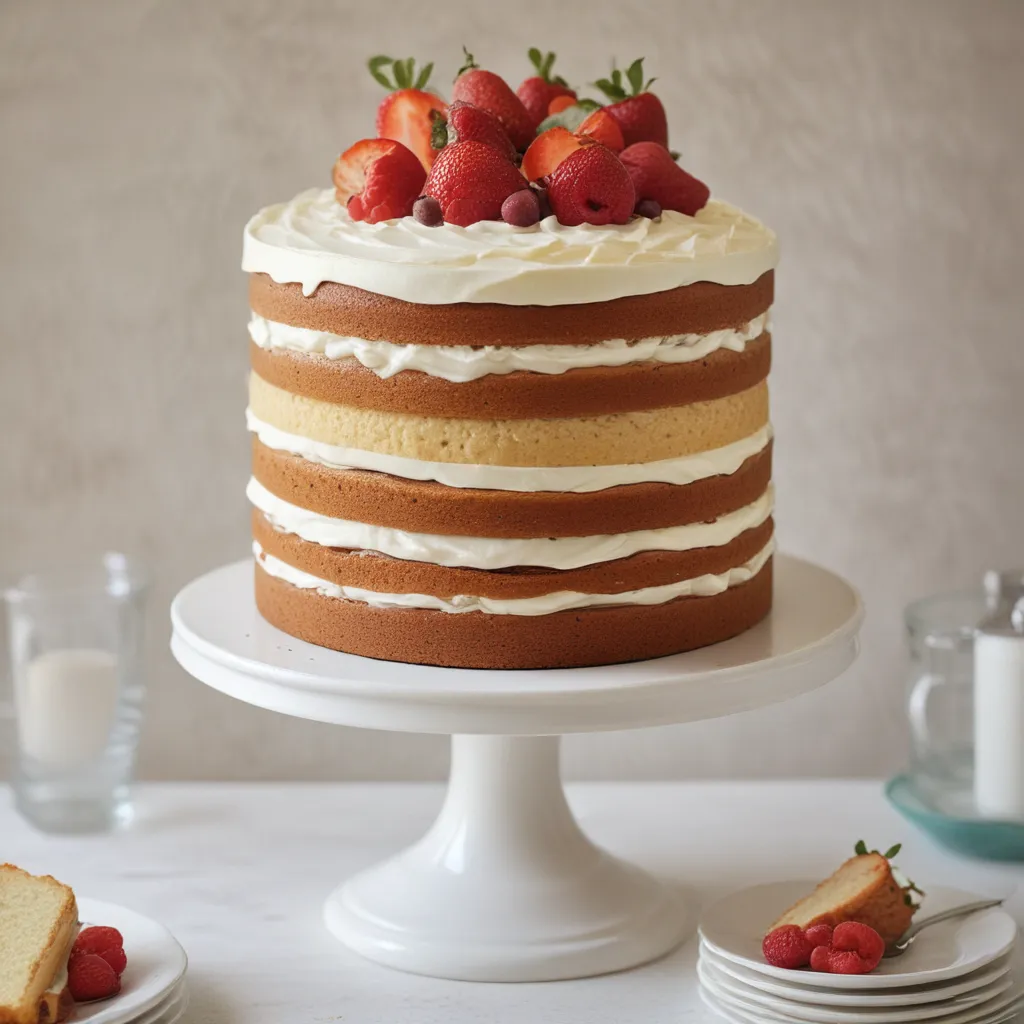Ah, the age-old conundrum of baking the perfect cake – one that’s so moist and decadent, it practically melts in your mouth. As the proud owner of Jax Cake Shop in the heart of San Jose, I’ve spent years perfecting my craft, experimenting with countless recipes and techniques to uncover the secrets to creating cakes that will have your taste buds doing the Samba.
The Science of Moistness
Let’s start with the basics, shall we? The key to achieving that elusive moist texture lies in the delicate balance of ingredients. You see, when it comes to cakes, moisture is the name of the game. But how do we achieve this harmonious state of being?
It all boils down to the ratio of wet to dry ingredients. Too much flour and you end up with a dense, dry crumb that will have your guests reaching for a glass of water. But add too much liquid, and you’ve got a gloppy, unappealing mess on your hands. No, the secret is finding that Goldilocks zone – where the moisture is just right.
The Importance of Fats and Oils
Now, we all know that butter is the backbone of any great cake. But did you know that the type of fat you use can have a profound impact on the overall texture? Unsalted butter, for example, lends a rich, creamy mouthfeel, while oils like vegetable or canola can introduce a delightfully light and airy crumb.
And let’s not forget about the all-important emulsifiers, like eggs and yogurt. These magical ingredients act as the glue that binds everything together, trapping air bubbles and creating that irresistible tender crumb. It’s like culinary alchemy, I tell you!
The Role of Sugar
Ah, sweet, sweet sugar – the unsung hero of moist cakes. Not only does it contribute to that luscious, indulgent flavor, but it also plays a crucial role in maintaining moisture. You see, sugar molecules have a way of attracting and holding onto water, preventing the dreaded dryness that can plague so many baked goods.
But it’s not just about the amount of sugar – the type of sugar matters too. Brown sugar, with its molasses-y notes, can lend a deeper, more complex moisture, while granulated white sugar offers a clean, classic sweetness. It’s all about finding the right balance to suit your taste buds.
Baking Techniques for Moist Cakes
Now that we’ve covered the science behind moist cakes, let’s dive into the practical application. As any seasoned baker will tell you, there’s an art to achieving that perfect texture, and it all starts with the way you handle the batter.
The Importance of Mixing
Ah, the mixing process – the make-or-break moment in the cake-baking journey. Overmix and you’ll end up with a tough, rubbery crumb. Undermix, and you’ll be left with a dense, gummy mess. No, the key is to find that elusive sweet spot, where the ingredients are just barely combined.
I like to use a gentle, folding motion when incorporating the wet and dry ingredients, taking care not to over-aerate the batter. This helps to preserve those precious air pockets, which are essential for creating that melt-in-your-mouth texture. And don’t forget to scrape down the sides of the bowl – we want to make sure every last bit of flour is fully incorporated.
Baking Time and Temperature
Ah, the age-old question – to bake high and fast, or low and slow? When it comes to moist cakes, the answer lies somewhere in the middle. You see, high temperatures can cause the outside of the cake to brown and set before the interior has a chance to fully cook, leading to a dry, tough crumb.
But bake at too low a temperature, and you risk a dense, soggy mess. No, the secret is to find that sweet spot, usually around 350°F (175°C), and let the cake bake until a toothpick inserted into the center comes out clean. And don’t forget to keep a close eye on the oven – those last few minutes can make all the difference!
Cooling and Storage
Ah, the final hurdle in the quest for moist cake perfection – the cooling and storage process. You see, even after the cake has emerged from the oven, the battle isn’t over. If you’re not careful, all that hard work can go to waste in the blink of an eye.
The key is to let the cake cool completely on a wire rack before attempting to frost or slice. This helps to preserve that precious moisture, preventing it from escaping and leaving you with a dry, crumbly disappointment. And when it comes to storage, be sure to keep your cakes in an airtight container at room temperature – no need for the fridge, which can actually dry them out.
Real-Life Examples of Moist Cake Success
Now that we’ve covered the theory, let’s dive into some real-life examples of moist cake greatness. I’ll never forget the time my dear friend Mina came to me, desperate for help with her cousin’s wedding cake. She had tried recipe after recipe, but no matter what she did, the end result was always a dry, crumbly mess.
But with a few simple tweaks to her technique, we were able to transform those dense, uninspiring layers into a true showstopper. The secret? Swapping out some of the butter for a touch of canola oil, and being extra mindful of the mixing process. The result? A cake so moist and decadent, it had the entire wedding party swooning.
And then there was the time I received a frantic call from my old college roommate, Jasmine, who was hosting a birthday party for her young daughter. She had made the mistake of using all-purpose flour instead of cake flour, and the resulting cake was as dense as a brick. But with a few strategic additions of extra eggs and a touch of Greek yogurt, we were able to salvage the situation and create a moist, fluffy masterpiece that had the birthday girl beaming with delight.
Conclusion: Unlock the Secrets to Moist Cake Perfection
So, there you have it, my friends – the secrets to creating cakes that will have your taste buds doing cartwheels. From the science behind moisture-rich ingredients to the art of mixing and baking, I’ve shared all the tips and tricks I’ve learned over the years.
And remember, the key to moist cake perfection isn’t just about following a recipe to the letter. It’s about experimenting, tinkering, and finding what works best for your unique baking style and preferences. So don’t be afraid to get a little adventurous in the kitchen – after all, that’s where the magic happens!
If you’re ready to put your newfound moist cake knowledge to the test, I’d be more than happy to help you out. Just head on over to Jax Cake Shop and let’s get started on your custom cake creation. Who knows, maybe we’ll even uncover a few more moist cake secrets along the way!





